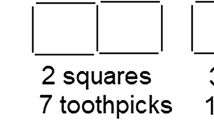Abstract:
Teaching vector calculus (the integral-transforming theorems, in particular) to students of engineering has got many difficulties. On the one hand complex and deep knowledge of vector algebra (in three dimensions) and calculus (in one and many variables) is necessary for understanding, on the other hand it is difficult to illustrate the concepts of vector calculus exclusively by means of blackboard and chalk. In this paper we demonstrate how the line integral, the surface integral, the theorems of Gauss and Stokes are taught with the help of a MAPLE computer algebra system (CAS). Application of this pedagogical method supports the hypothesis that using of CAS makes it possible to teach those kinds of concepts and theorems which are often used in engineering practice but couldn’t be presented because of lack of time and appropriate preliminary training.
Zusammenfassung
Der Unterricht der Vektoranalysis (und vorwiegend der Sätze, die von den Integraltransformationen handeln) für Ingenieurstudenten verursacht viele Mühe. Einerseits braucht es ein komplexes und gründliches Wissen in Vektoralgebra (in drei Dimensionen) und in Analysis (in ein und zwei Variablen), andererseits ist es schwierig, die Begriffe der Vektoralgebra mit Kreide an der Tafel zu veranschaulichen. Es wird in diesem Artikel demonstriert, wie wir das Linienintegral, das Oberflächeintegral und die Gauss’schen und Stokes’schen Integralsätze mit Hilfe des CAS Program MAPLE lehren. Die Anwendung dieser pädagogischen Methode unterstützt die Hypotese, dass solche-in Praxis oft benutzte aber vorher wegen Zeitmangels und mangelhafter Vorbildung nicht vorkommenden-Begriffe und Sätze mit Hilfe von CAS gelehrt werden können.
Similar content being viewed by others
References
D. Crowe, H. Zand,Computers and undergraduate mathematics I: setting the scene, Computers & Education, Vol. 35, 2000, 95–121.
R. Sutherland, N. Balacheff,Didactical complexity of computetional environments for the learning of mathematics, International Journal of Computers for Mathematical Learning, Vol. 4, 1999, 1–26.
Kazutoshi Aso,Visual images as educational materials in Mathematics, Community College Journal of Research and Practice, Vol. 25, 2001, 355–360.
C. Leinbach, D. C. Pountney, T. Etchells,Appropriate use of a CAS in the teaching of mathematics. Int. J. Math. Educ. Sci. Technol., Vol. 33, 2002, 1–14.
I. H. Perjési, M. Klincsik,An Interactive Method of Teaching Vectorcalculus via Internet ODL Networking for Quality Learning, Lisbon 2000 Conference Proceedings 67–71.
Klincsik Mihály, Perjésiné Hámori Ildikó:Vektoranalízis müszaki, fizikai és MAPLE alkalmazásokkal University Press, 1999, Pécs




